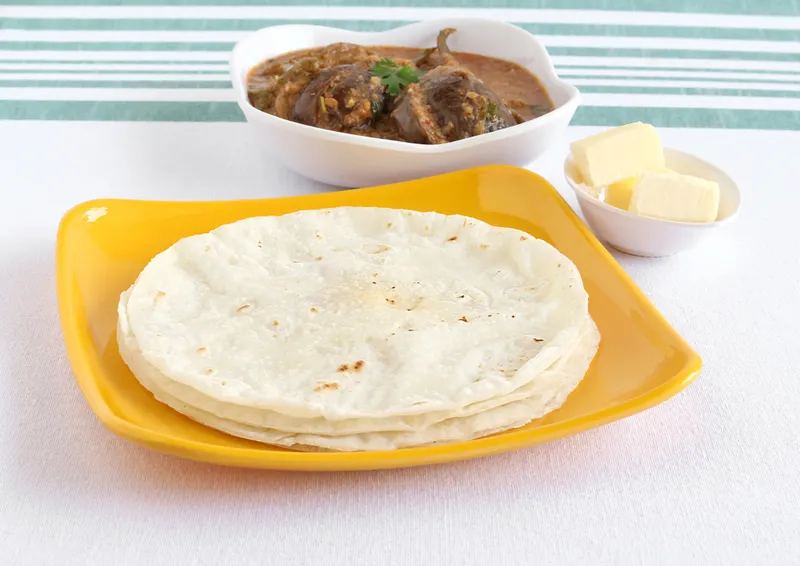Mallipoo idlis, neer dosa or sourdough sandwiches: Keep your breakfast local and delicious
Breakfast is the most important meal of the day, but why eat the same thing each morning? Try out local flavours and add desi foods to your breakfasts to make each day special
I have a very distinct memory of sitting down with my mother at the breakfast table with a bowl of cornflakes and milk and a banana sliced on top. “Hurry up and finish it, it’s good for you,” she would say, which is probably why I developed an aversion to cereal. I don’t mind oats but cornflakes are like sloppy seconds, suitable only for geeks with attention-deficit issues.
I love a South Indian breakfast: nothing beats fluffy, mallipoo idlis, served with freshly ground coconut chutney, topped with mustard and curry leaves or molaga podi with gingelly oil or ghee. Sambhar in Madras is spicy and redolent with the flavour of hing and pepper but cross the border into Karnataka and you will find a sweetish tang to the sambhar because a generous dollop of jaggery has been added to the pot.
1564466136190.png?fm=png&auto=format)
South Indian specials: Idli and sambhar with a mix of chutneys
The only two vegetables that should feature in sambhar are drumsticks and sambhar onions: do the math. A masala dosa contains roughly 350 calories which is why it should be a weekly indulgence rather than a daily staple. A Mysore masala, with its distinctive smear of garlic-chilli paste on the inside, will rock your socks off.
I know most people turn their noses up at upma, but a well-made khara bath can be quite delicious. Lemon rice shavige, made with vermicelli, is a feast for evolved palates, especially when served with vegetable kurma. A far healthier option to the dosa is the pessaratu, made of green gram and yoghurt, served with delicious chutney made of raw peanuts, tamarind and red chilli. North Karnataka enjoys jowar or bajra rotis served with spicy peanut chutney.
If you are on a coffee estate in Coorg, breakfast is an elaborate affair with akkirotti, a dryish sort of chapathi made with rice flour, served with a ball of chutney, made with fresh coconut and bird eye chilli or if you’re lucky, with leftover pandi kari. This consists of chunks of pork, simmered in a savoury melange of coriander, shallots, chilli, pepper, mustard, ginger, garlic and turmeric with a splash of kachampulli: smoky vinegar with the consistency of treacle.

Akki roti with spicy curry
In my home town of Mangalore, one of our favourite breakfasts was kanji, a simple gruel of boiled rice served with leftover fish or mutton curry, slices of mango pickled in brine in earthenware jars, chopped onion and green chilli with a splash of coconut oil and fresh fruit. Then there was biscuit rotti, a deep fried savoury puri stuffed with a secret mix of spices, served with fresh chutney or bunsu (buns made with flour and bananas) which sounds rather gross but tastes damn good.)
Goli bajjis, made with maida and jeera are another coastal favourite while nothing can beat the sheer simplicity of neer dosa. Prepared by a master chef, a neer dosa has the consistency of the finest lace, the lightness of a butterfly’s wings and the ability to combine with the most temperamental partners: a vegetarian gassi, a fiery chicken curry or even a pork baffat. To each of her ardent admirers, a neer dosa says, “We will, we will rock you.”
1564466880173.png?fm=png&auto=format)
Light and fluffy Neer Dosa
In Rajasthan, a typical breakfast is potato or onion kachori, washed down with a steaming glass of saffron milk and a jalebi. Ideally this should be followed by a session of mud-wrestling. Gujjus enjoy thepla or khandvi with pickle while Punjabis relish their pronthe: cauliflower or radish, subtly enhanced with pomegranate seed, dry mango, chilli and spiced and topped with a big chunk of butter with a katori of fresh, creamy dahi on the side and of course, home- made aachar.
In God’s own country, breakfast can be appams with mutte roast or iddiappam with potato curry, puttu with kadala, a light curry made with Bengal gram, doshe with chutney or kanji with crispy salt fish. Vellayapam, a spongy cross between an appam and a dosa, is a Syrian speciality, often served with beef curry. Karikku dosa, made with tender coconut and rice is seriously delicious, especially with tomato chutney, while those with a sweet tooth will relish Ela Ada, a steamed rice parcel stuffed with jaggery and grated coconut.
If you’re looking for a variation on the full English, you could try a sourdough open face sandwich instead of eggs, bacon, baked beans and toast. Power toppings include bacon and avocado, anchovy, hard-boiled eggs and olive, liver pate with onion marmalade, Parma ham and burrata with rocket, goat cheese and tomato, roast brinjal with pickled onions, artichoke with dill and pickled gherkins…you get the picture? Just pick out a good loaf of sourdough, lightly toast it and allow your imagination to run riot.
1564467111863.png?fm=png&auto=format)
A mélange of flavours in a sourdough open face sandwich
Ragi bread with peanut or almond butter and a dollop of fresh honey tastes divine as does a gooseberry or guava preserve. If you are exceptionally adventurous try a Thai breakfast of Jok Moo, congee with pork, Nam sup, a sour soup or Tom chuet, which is a clear vegetable soup, very light and flavourful, served with noodles.
Of course, there are a zillion options to choose from ranging from fish balls, mushrooms, chicken and pork ribs but my favourite is the one served at the Debo Café in Hua Hin with a delicious broth, glass noodles, bok choy, bamboo shoots, fish balls and a fiery homemade sauce. When you finish you will feel like you’ve been through a work-out: hot, sweaty and in need of a massage.
The Japanese breakfast of miso soup followed by an omelette is ideal for those inclined towards clean, umami flavours, while the Chinese breakfast of congee is flavourful, filling and nutritionally dense. The French breakfast is basically coffee and croissant but if you are in rural France, try the rilletes, which is a rich pate of pork best eaten with a crusty baguette.
Whichever part of the world you are in, don’t miss the breakfasts of the region. Nutritionists tell us that breakfast should be our most important meal of the day which is why we should plan a breakfast that’s high on protein and fibre and low on carbs and sugar. Local foods are the best, so don’t forget to sample them whenever possible and enjoy the vast variety of flavours on each breakfast menu.
Here’s one of my favourite recipes:
STYLISH EGG ROLLS
Ingredients: 4 crusty rolls, chopped chives or finely chopped spring onion and parsley, grated cheddar, 4 eggs, butter, salt and pepper to season.
1564467370898.png?fm=png&auto=format)
Crusty egg roll for the win
Method:
1. Preheat the oven to 180 C and keep a baking tray handy.
2. Use a serrated knife to cut the top quarter off the rolls and transfer the top pieces to the baking tray. Scoop out some of the bread to make a well in the centre of each roll.
3. Arrange the rolls on the baking tray. Sprinkle 2 tablespoons cheddar and 1 tablespoon chives/spring onion into the base of each roll.
4. Crack an egg into each roll. Top each egg with a little butter or if you prefer use a little cream. Season each egg with salt and pepper.
5. Bake until the rolls are toasted, the egg whites are set and the yolk is still a little runny, 15 to 17 minutes. Let it cool for 5 minutes and then garnish each with a little parsley. Serve immediately with the crusty tops on the side.
Picture credit: All pictures are from Shutterstock


1564466136190.png?mode=crop&crop=faces&ar=2%3A1&format=auto&w=1920&q=75)








